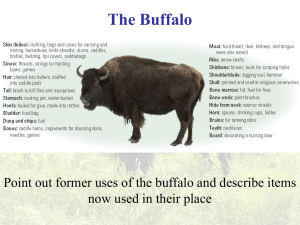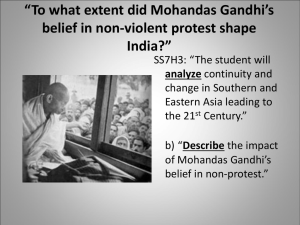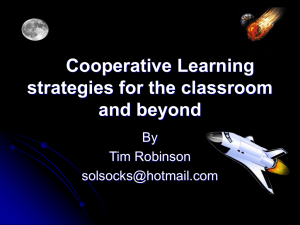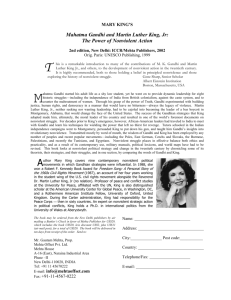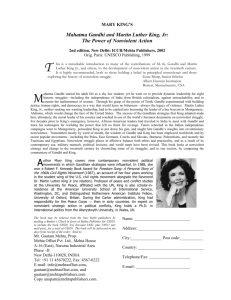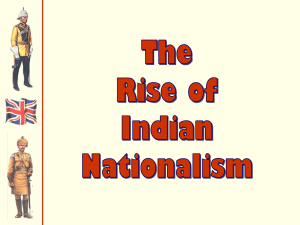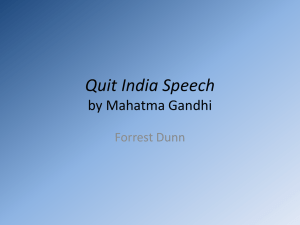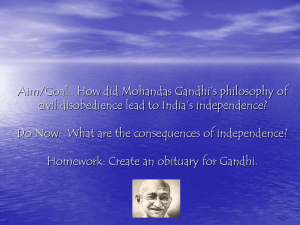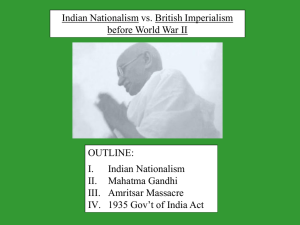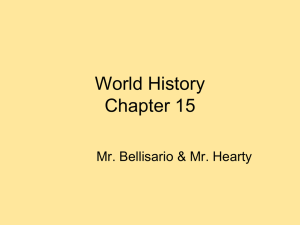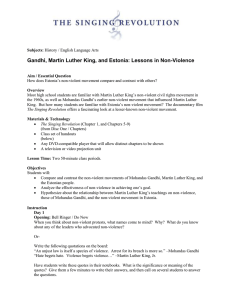Mahatma Gandhi - GeorgiaStandards.Org
advertisement
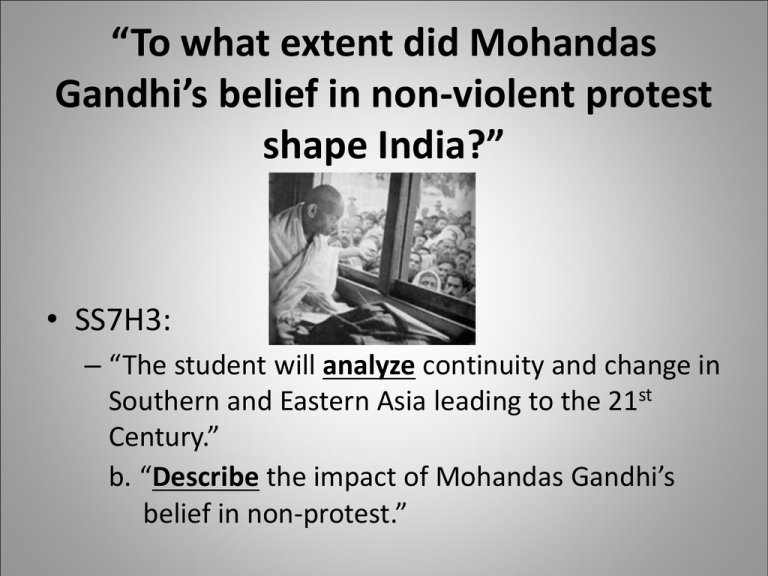
“To what extent did Mohandas Gandhi’s belief in non-violent protest shape India?” • SS7H3: – “The student will analyze continuity and change in Southern and Eastern Asia leading to the 21st Century.” b. “Describe the impact of Mohandas Gandhi’s belief in non-protest.” King and Gandhi “Nonviolence is the answer to the crucial political and moral questions of our time…” - Martin Luther King, Jr. “I object to violence when it appears to do good. The good is only temporary; the evil it does is permanent.” - Mohandas Gandhi Guiding Questions (King Quote) “Nonviolence is the answer to the crucial political and moral questions of our time…” - Martin Luther King, Jr. • What do you remember about Martin Luther King, Jr. from 5th grade? • How did Martin Luther King, Jr. lead the civil rights movement in the U.S.? • What do you believe would have occurred if King used more violent methods to influence the civil rights movement? Guiding Questions (Gandhi Quote) “I object to violence when it appears to do good. The good is only temporary; the evil it does is permanent.” - Mohandas Gandhi • What did Mohandas Gandhi believe about violence? • What do Mohandas Gandhi and Martin Luther King, Jr. have in common? • How do you think that Gandhi led the Indian independence movement against the British? Gandhi Article • Read the article, “A Man Out of Time?” • While you read, complete your “Reading Guide.” Reading Guide 1) On your article, circle all of the proper nouns, dates, numbers, and locations. 2) What are 3 words that you do not understand? _______________; What do you think it means? _________________________ _______________; What do you think it means? _________________________ _______________; What do you think it means? _________________________ 3) What is your article about? Who: __________________________________________________ What: __________________________________________________ Where: __________________________________________________ Why: __________________________________________________ When: _________________________________________________ 4) Summarize your article using 4-6 sentences. Excerpt • “Martin Luther King, sometimes referred to as the 'black Gandhi', visited India in 1959. He said: 'To other countries I may go as a tourist. But to India I come as a pilgrim.' As a young man he had heard a lecture on Gandhi and went out to buy half a dozen books on his life and works. He said they taught him that the Christian injunction to non-violence, which he had felt was valid only in conflicts between individuals, could be applied to racial groups in conflict with nations. He interpreted Gandhi's message as 'nonviolent resistance to evil'. When he went as a pastor to Montgomery, Alabama and found himself spokesman for the civil rights movement, he said he was driven back to the Sermon on the Mount and Gandhian method. The year-long refusal, from 1955-56, to ride in buses that practised discrimination in Montgomery, despite the hardship it entailed to the black protestors who had to walk many miles to work, was fully in the Gandhian spirit. King's remarks on being imprisoned were also true to his mentor: 'I was proud of my crime. It was the crime of joining my people in a non-violent protest against injustice.” Adams, J. (2010). A Man Out of Time?. History Today, 60(4), 21-25. Summary • Get into cooperative groups of three. • Share your summaries with your group members and draw conclusions about the impact of Gandhi’s belief in non-violent protest. • As you listen to the other summaries, identify similarities and differences that are discovered. RAFT • RAFT: – Role: • Mohandas Gandhi – Audience: • The Indian resistance movement – Format: • Letter – Topic: • Why Indians should employ non-violent protest against the British
